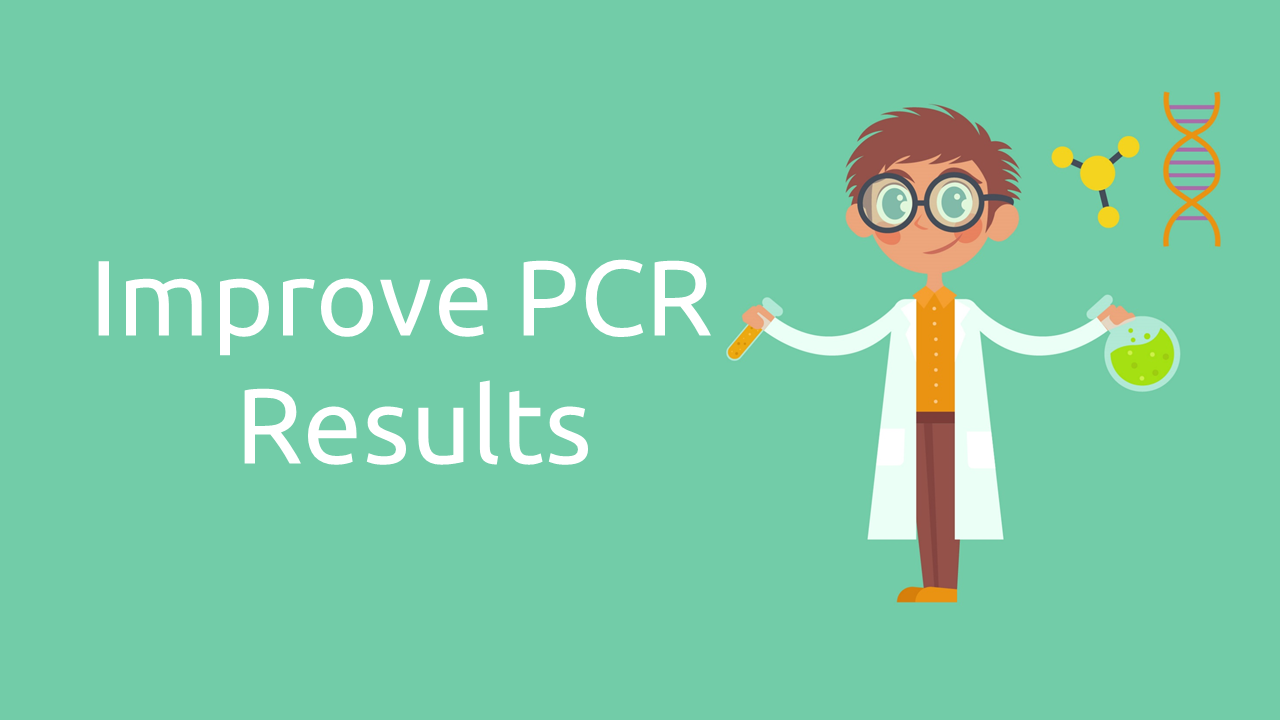Are you struggling to get better PCR Results?
You are not alone. Almost every early researcher working with DNA Amplification suffers something similar.
After discussing with experts and combing my own experience with it. Following are the 6 pro tips that will help you to get superior PCR results on the first try.
Clean Your Work Place
Polymerase Chain Reaction can amplify a small amount of DNA. So it is better to make sure that there is no other DNA present than the sample. Clean your benchtop with surfactants.
Pipettes and other equipment that you are using must be sterile. Don’t forget to wear gloves also.
Always include control reactions, without template DNA and without enzyme, to ensure the results are truly due to amplification of the right sample.
Primer Design for PCR
Primers are always specified 5′ to 3′, left to right. Verify that your primers are designed and ordered in the correct orientation. Primers for PCR and sequencing should be between 18 to 25 nucleotides in length.
Primers for PCR and sequencing should have a GC content between 40 and 60%, with the 3′ of a primer ending in C or G to promote binding. The 3′ end of the primer should be an exact match to the template DNA, because extension by DNA polymerase, during PCR, depends on a good match at the 3′ end.
Have no secondary structure (i.e., hairpin loops). Have balanced distribution of G/C and A/T pairs. Are not complementary to each other at the 3-foot ends. Have melting temperatures (Tm) about 5-10 degrees Celcius below the annealing temperature, which is usually between 55 and 65 degrees Celcius.
Proportion of Reaction Components in PCR
Reaction components in a PCR are just like the recipe of the dish. If you want to get perfect taste, you must optimize them. Following are some optimized conditions for Taq Polymerase enzyme.
DNA Template
- Use high quality, purified DNA templates
- Approximately 104 copies of target DNA are required to detect product in 25-30 PCR cycles
- Use 1pg–1ng of plasmid or viral templates
- Use 1ng–1µg of genomic templates
- Higher DNA concentrations decrease amplicon specificity (i.e., extra bands are more likely), particularly when a large number of cycles are employed
- Use the higher DNA concentrations when fewer cycles are desired (e.g., to increase fidelity)
Primers
- Final concentration should be 0.05-1 µM, typically 0.1-0.5 µM of each primer
- Higher concentrations may increase secondary priming and create spurious amplification products
Magnesium Concentration
- 1.5-2.0 mM is optimal for Taq DNA Polymerase
- Optimal concentration depends on template, buffer, DNA and dNTPs (each has the potential to chelate magnesium)
- If [Mg2+] is too low, no PCR product will be seen
- If [Mg2+] is too high, undesired PCR products may be seen
- Optimize by supplementing magnesium concentration in 0.5 increments up to 4 mM
Deoxynucleotides (dNTPs)
- Typical concentration is 200 µM of each dNTP.
- 50-100 µM enhances the fidelity of polymerization, but reduces yields
- Higher concentrations increase yields particularly in long PCR but can reduce fidelity
Taq DNA Polymerase Concentration
- Use 0.5–2.0 units per 50 µl reaction, ideally 1.25 units
Choice of Enzyme for PCR
The traditional Taq polymerase has been replaced in many labs by higher fidelity enzymes (those that make fewer errors). But before deciding the use of any enzyme, make sure to read good literature about it and also consult our supervisor before ordering.
Choose your PCR enzyme as follows:
- General and routine PCR, use an ordinary, standard thermostable DNA polymerase, such as Taq.
- Gene expression or mutagenesis experiments, use a proofreading enzyme.
- Clean product and high yield, use a hot-start polymerase.
- Long amplicons, use a long-range DNA polymerase.
Equal amounts of all four dNTPs also help reduce the polymerase error rate. Certain additives such as betaine, BSA, detergents, DMSO, glycerol, and pyrophosphatase can also affect enzyme specificity or reaction efficiency.
Type of Thermocycler
This is one area where going cheap will not pay off in the long run when you are faced with a finicky reaction or using primers that require a narrow range of annealing temperature.
Make sure you do your homework before using the PCR machine in your lab. If you have the one only in the entire lab (Just like ours), Best of Luck.
the Cycle of PCR
Cycling the temperature is what the PCR machine does primarily. It must be precisely adjusted as per requirements of the reaction mixture you are using.
Increased yield can be achieved by increasing the extension time about every 20 cycles, to compensate for less enzyme to amplify more template. Usually, less than 40 cycles are enough to amplify less than 10 template molecules to a concentration large enough to view on an ethidium bromide-stained agarose gel.
Please share what mistakes you made that resulted in poor PCR Results and what were the solutions?

Leave a Reply